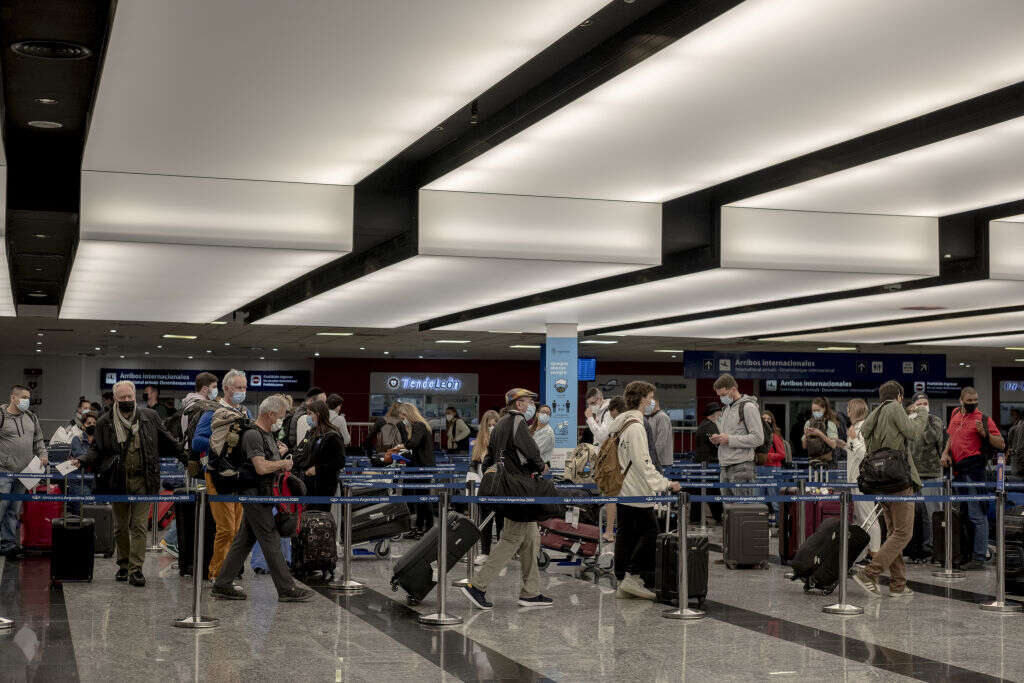
Business travel accounts for a large proportion of an organisation’s carbon footprint – as much as 50%, according to one estimate. And air travel in particular accounts for 90% of business travel emissions. Employers around the world are therefore considering ways to minimise flights to help achieve their net zero goals.
The pandemic showed that virtual collaboration can replace face-to-face meetings, and so drastically cut business travel emissions. Cloud software provider Salesforce, for example, saw carbon emissions from business travel drop from 146,000 metric tonnes of CO2 in 2019 to just 20,000 metric tonnes last year as a result of travel restrictions.
As these restrictions ease, however, some businesses are slipping back into their old, polluting habits. If organisations are serious about their net zero commitments, they must build on the emissions reductions triggered by the pandemic. This requires improving the quality of virtual meetings and re-engineering business processes to be geographically independent, CIOs tell Tech Monitor.

Aviation accounts for 90% of business travel’s carbon emissions. (Photo by Erica Canepa/Bloomberg via Getty Images)
Cutting air travel by improving virtual collaboration
As a large multinational with presence in more than 35 countries, business travel has been a constant feature for Experian. The consumer credit reporting company has set itself the goal to reduce Scope 3 greenhouse gas emissions by 15% by 2030. Cutting down on air business travel will be core to achieving that, says Aline Hayes, director of technology transformation in EMEA at Experian.
“Protecting the environment is important to us all, and as a large business which crosses borders, we understand that we have a responsibility to make progressive changes to how we operate,” Hayes says.
“Our people are encouraged to think about whether it’s necessary for them to physically travel to meetings, especially when air travel is involved. The pandemic has changed perspectives on how we conduct meetings and that joining on video doesn’t need to be a disadvantage with the right preparation.”
The pandemic has changed perspectives on how we conduct meetings and that joining on video doesn’t need to be a disadvantage with the right preparation.
Aline Hayes, Experian
Infrastructure and broadband speeds vary considerably across the EMEA region, however. In some countries, energy providers operate load shedding – cutting supply to certain customers in response to peaks in demand. This makes online meetings a challenge. To bypass this hurdle, Hayes and her team have supplied 3G dongles for laptops to the staff in the countries where connection is less reliable to make it easier to work remotely.
Etiquette for online meetings
Hayes’ team has also introduced policies designed to make hybrid meetings as inclusive as possible. Many of Experian’s meeting rooms and offices have now reminders for staff asking them to practice “good etiquette” to ensure that those not physically present in a meeting do not miss out.
“It’s often habits that need to change rather than the technology,” continues Hayes. “For example, remembering to include people on video when having a discussion or avoiding talking over each other, which can be hard for microphones to pick up.”
Kevin Antao, CIO of human rights campaign group Amnesty International, also created a series of manuals for online meeting etiquette, after last year’s travel bans and lockdown prevented its staff from carrying out its international work in person. Policies and guidelines, which include setting a 45-minute time limit, asking if the meeting is essential or establishing rules on agendas, are still in place today.
Amnesty’s most important meeting, the Global Assembly, usually requires air travel for up to 400 delegates from 70 countries. In 2020 and this year, the Global Assembly meeting took place virtually, using a suite of online tools. These include Zoom as the online meeting platform; Voiceboxer for simultaneous language interpretation; CrowdComms for voting; Eventsforce for registration; Civica as the elections platform; and a range of supporting tools such as MS Forms, Sharepoint, OpenSend, Google Docs, YouTube and Survey Monkey. “When engaging external audiences for a grand meeting like this you need all of these solutions,” adds Antao.
At Experian, the pandemic demonstrated that complex programmes do not have to be put on hold if in-person meetings are not possible, Hayes says. This has helped in developing greener and more sustainable ways of working that involve less travel.
“Normally we would co-locate in workshops or work somewhere for an extended period, but this was no longer an option, so we found ways around it,” explains Hayes. “It’s given us reason to reflect on whether we need that level of co-location in the future because we have shown we can deliver while not sitting in the same room.”
Adapting business processes for virtual collaboration
Although the pandemic has shown that virtual meetings can replace important face-to-face contact, it has also revealed the fault lines in some businesses processes, says veteran CIO and transformation consultant Christine Ashton. Auditing, for example, often requires staff to be physically present in a given location, which may require air travel.
“Over the past 18 months, many have focused on improving digital connectivity using SASE [secure access service edge], for example, and digitising processes,” says Ashton. “What we haven’t done quite as much is to transform processes so that they are geographically independent and fail-safe, and that extends to audit trailing and compliance.”
Unless companies can build security and audit into processes and ways of working, travel will still be needed to validate what happens on the ground, she adds. To avoid this, Ashton encourages IT departments to look beyond simply digitising processes and thinking about how they can become geographically independent. Tools such as governance, risk and compliance (GRC) software and automated auditing can also help reduce the need to keep using air travel.
Ashton also believes virtual meetings are due for an upgrade. “We have lots of collaboration tools and virtual whiteboarding,” she says. “I wonder if we have to look deeper and re-think how you design meetings in a fundamentally different way for virtual working.”
This might include augmenting virtual meetings with real-time data insights, Ashton suggests. “Should IT departments also be looking at tools such as data fabric and real-time analytics that provide the trends and data for business teams to take their collaboration to the next level?”






